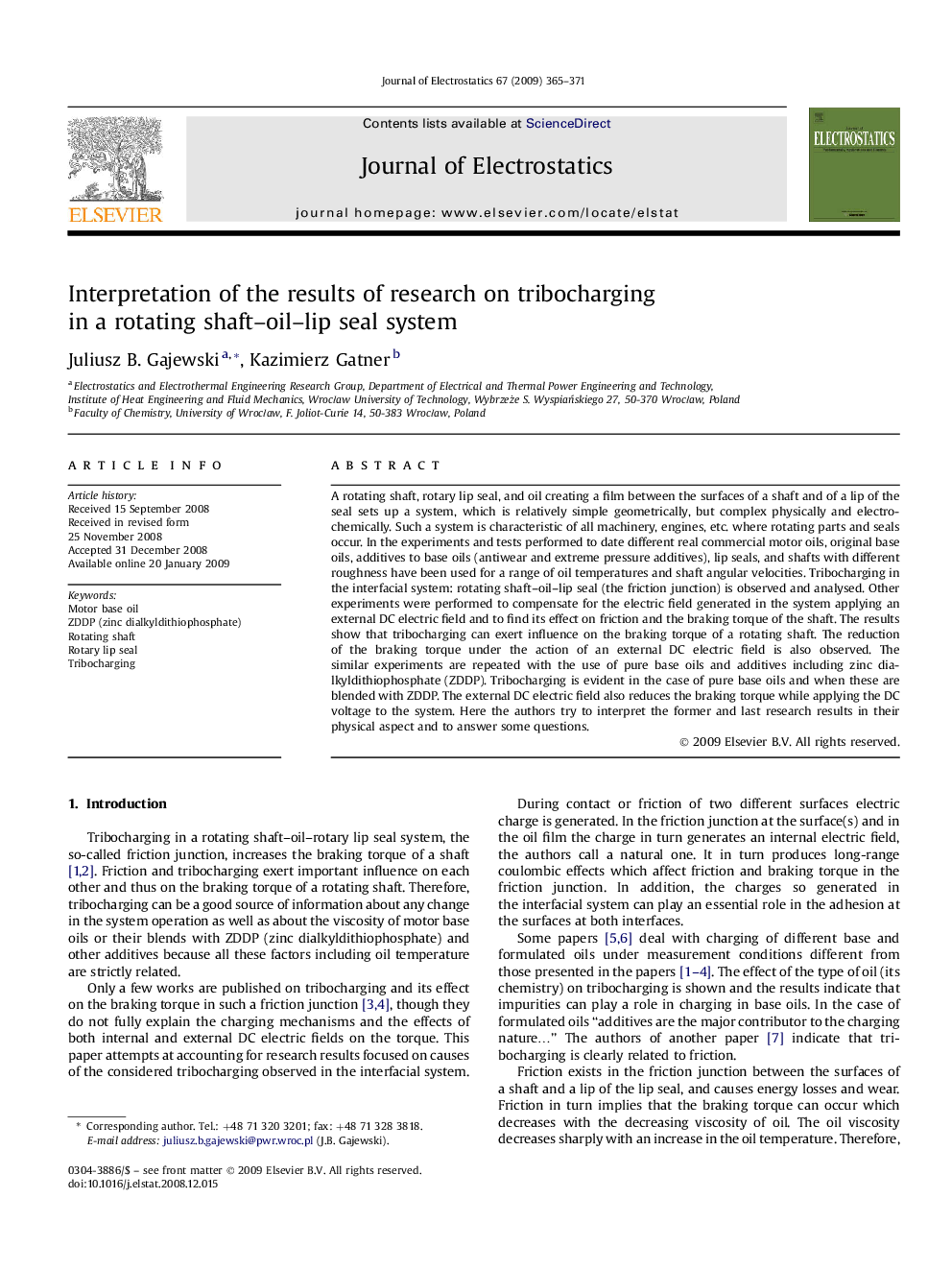| Article ID | Journal | Published Year | Pages | File Type |
|---|---|---|---|---|
| 724695 | Journal of Electrostatics | 2009 | 7 Pages |
A rotating shaft, rotary lip seal, and oil creating a film between the surfaces of a shaft and of a lip of the seal sets up a system, which is relatively simple geometrically, but complex physically and electrochemically. Such a system is characteristic of all machinery, engines, etc. where rotating parts and seals occur. In the experiments and tests performed to date different real commercial motor oils, original base oils, additives to base oils (antiwear and extreme pressure additives), lip seals, and shafts with different roughness have been used for a range of oil temperatures and shaft angular velocities. Tribocharging in the interfacial system: rotating shaft–oil–lip seal (the friction junction) is observed and analysed. Other experiments were performed to compensate for the electric field generated in the system applying an external DC electric field and to find its effect on friction and the braking torque of the shaft. The results show that tribocharging can exert influence on the braking torque of a rotating shaft. The reduction of the braking torque under the action of an external DC electric field is also observed. The similar experiments are repeated with the use of pure base oils and additives including zinc dialkyldithiophosphate (ZDDP). Tribocharging is evident in the case of pure base oils and when these are blended with ZDDP. The external DC electric field also reduces the braking torque while applying the DC voltage to the system. Here the authors try to interpret the former and last research results in their physical aspect and to answer some questions.
